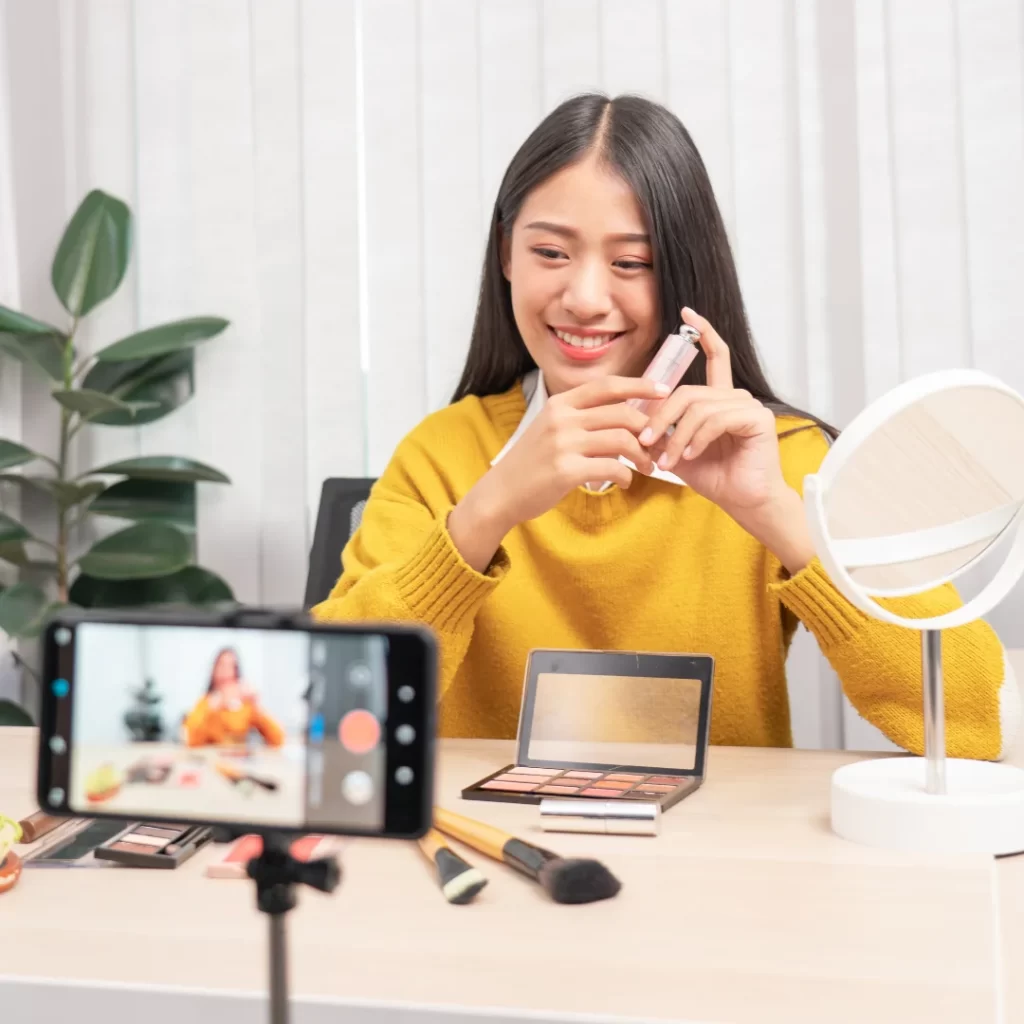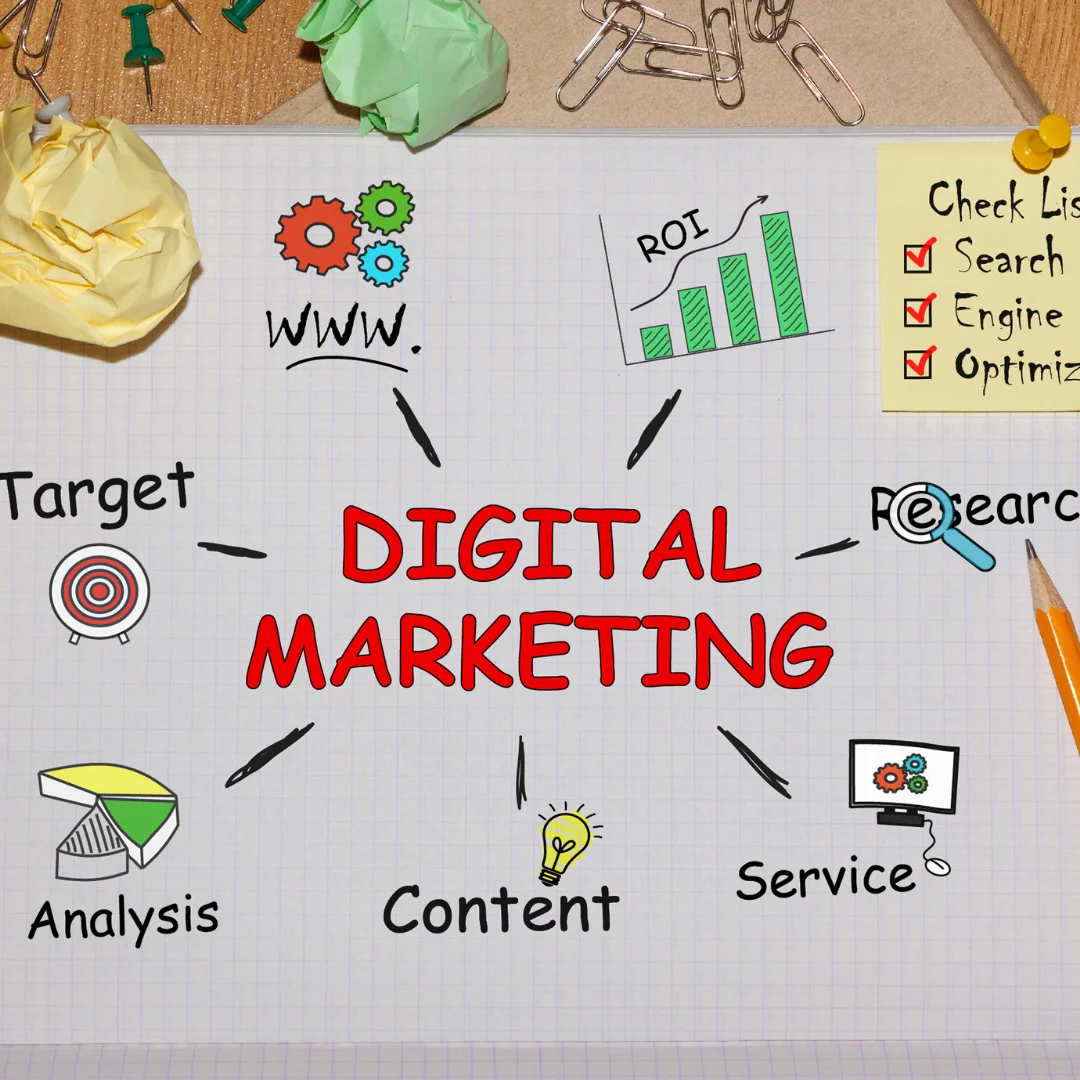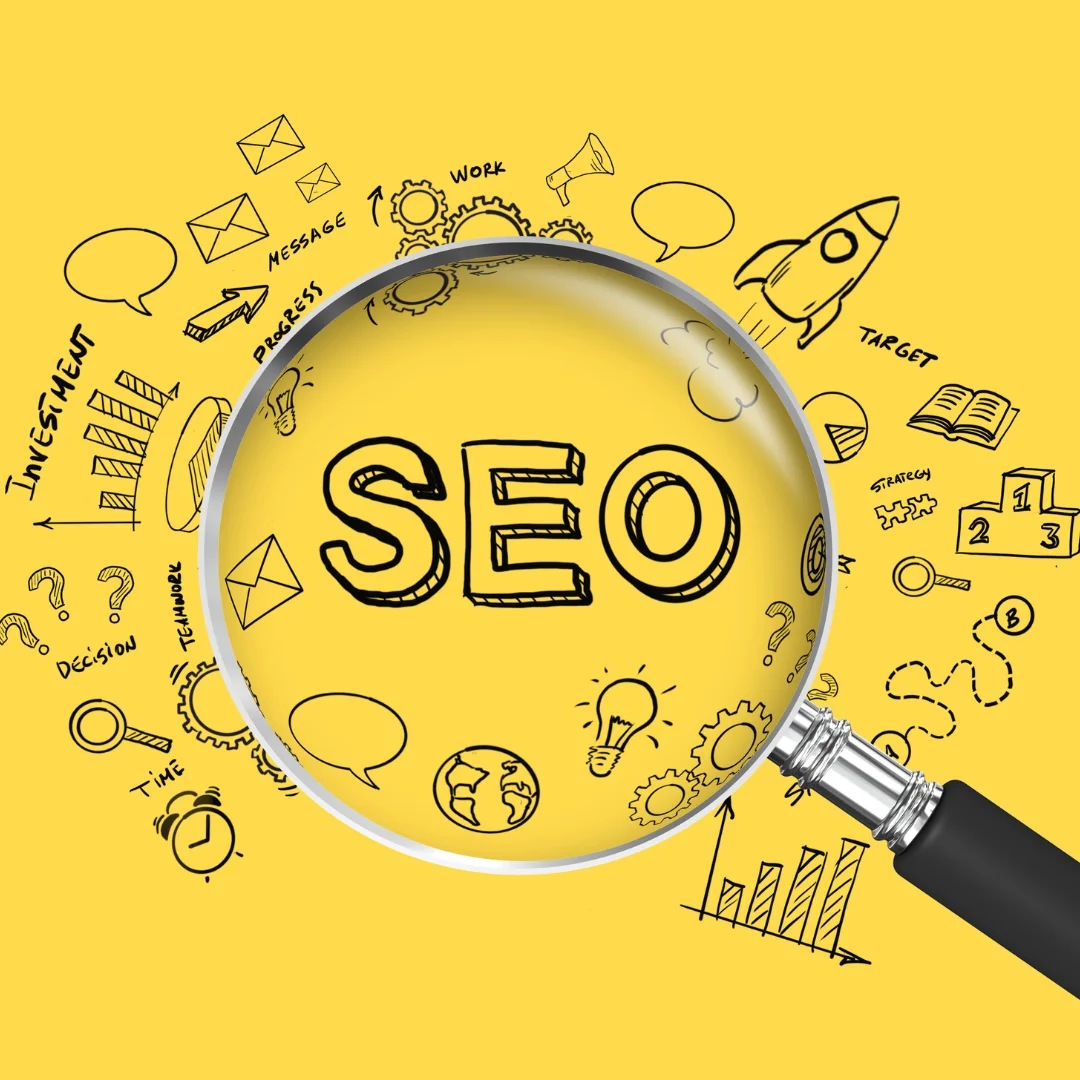Welcome to influencer marketing—the art of convincing someone with more followers than friends to sing your brand’s praises. In 2024, it’s everywhere, from TikTok dance routines to Instagram reels that somehow make breakfast cereal look glamorous. But what does “influencer marketing” really mean? It’s essentially when a brand pays or collaborates with social media personalities to promote their products or services, hoping these influencers’ “clout” rubs off on them.
This article will dive deep into the good, the bad, and the bewildering in the world of influencer marketing. We’ll explore the types of influencers, key benefits, glaring risks, best practices, real-world case studies, and, of course, the trends that’ll keep us on our toes in 2024.
Understanding Influencer Marketing
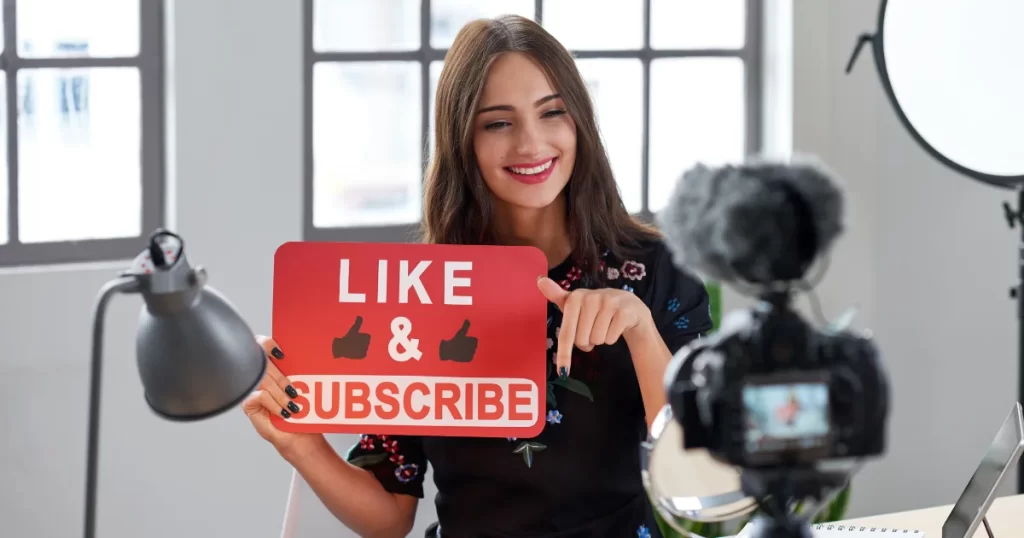
Influencer marketing has come a long way from the days when “influence” meant having your name on a toothpaste commercial. Today, it’s about building connections, sparking conversations, and yes, occasionally making us wonder if we, too, need that vitamin-infused face mist. As brands dive deeper into influencer collaborations, the various types of influencers—macro, micro, nano, and even virtual—bring a broad spectrum of audience sizes, engagement levels, and, let’s be honest, quirks.
Below, we break down these influencer categories, from their typical follower counts to the distinct characteristics that make each of them a powerful tool (or potential risk) for brands looking to ride the influencer marketing wave.
Types of Influencers: An Overview
| Type of Influencer | Follower Count | Audience Reach |
|---|---|---|
| Macro-Influencers | 100k – 500k | High reach, moderate engagement |
| Micro-Influencers | 10k – 50k | Niche reach, high engagement |
| Nano-Influencers | <10k | Super niche, ultra-high engagement |
| Virtual Influencers | N/A | High novelty, unpredictable engagement |
Each type offers its own advantages, quirks, and, let’s face it, potential headaches. Now, let’s dig into each category to find out what makes them tick.
Macro-Influencers (100k-500k followers)
These are the big players in the game, but they’re not quite full-blown celebrities—think of them as semi-famous personalities with impressive reach but still some level of relatability. Macro-influencers usually boast follower counts in the 100,000 to 500,000 range, giving them substantial sway across different demographics. They’re the fitness guru on YouTube, the travel blogger with scenic Instagram posts, or the lifestyle maven who somehow makes balancing smoothies look like an art form.
What sets macro-influencers apart? Their audience is broad and diverse, making them ideal for brands wanting to spread awareness on a larger scale. They can be effective for campaigns where reach is critical, and while their engagement rates might not rival those of smaller influencers, their wide visibility often compensates for this. And, of course, it doesn’t hurt that they’re generally professional, reliable, and know how to stick to a brief.
“Macro-influencers are valuable because they can introduce a brand to hundreds of thousands of potential customers in one post. It’s like a mini-celebrity endorsement without the celebrity price tag,” says social media strategist Gina Stokes.
Micro-Influencers (10k-50k followers)
Micro-influencers are the middle children of influencer marketing, and like many middle children, they know how to stand out by doing things a bit differently. With follower counts between 10,000 and 50,000, they often have niche audiences that are highly engaged and see them as credible, down-to-earth experts. If you’ve ever scrolled through a travel blog and felt that the recommendations were just a bit more genuine, there’s a good chance you were looking at a micro-influencer’s work.
Micro-influencers may not bring in sky-high impressions, but they have a superpower: they’re often trusted more than larger influencers because their content feels accessible and authentic. Whether they’re beauty bloggers reviewing the latest skincare line or tech enthusiasts unboxing gadgets, micro-influencers excel at creating communities that hang on their every word.
"Micro-influencers have higher engagement rates because they’re seen as relatable and credible. People trust their recommendations like they would advice from a friend," explains Neil Patel, a digital marketing expert.
Nano-Influencers (Less than 10k followers)
Don’t let the “nano” in their title fool you—these influencers punch well above their weight when it comes to authenticity. Nano-influencers typically have fewer than 10,000 followers, and while their audience may be small, it’s usually hyper-loyal. Think of them as your friend who recommends a restaurant you just know will be amazing because, well, they never miss.
Their recommendations can feel especially intimate, almost like chatting with a friend who really, really wants you to try out that new artisanal honey brand. Brands that work with nano-influencers often benefit from highly personalized promotions that come across as genuine because they are genuine—these influencers only work with products they truly love.
“Nano-influencers are the closest thing to word-of-mouth marketing in the digital age. Their followers are highly engaged because they feel a personal connection,” notes Jennifer Chan, an influencer marketing consultant.
Rise of Virtual Influencers (e.g., Lil Miquela, Shudu)
If you thought influencer marketing was weird before, buckle up because we’re in the future now. Virtual influencers, who exist only as CGI characters, have disrupted the industry in ways no one saw coming. These avatars don’t eat, sleep, or have any off-days. They also don’t have pesky issues like opinions that could tarnish a brand’s image—although some people find their lack of humanity a little… unsettling.
Take Lil Miquela, for example. She’s a digital creation with millions of followers, big-name brand endorsements, and a “life” that involves pop music, social justice posts, and, somehow, more relatability than one might expect. Virtual influencers like her are experimental, yes, but they’re proving highly effective for brands wanting to tap into audiences who love novelty and aren’t fazed by the increasingly blurred lines between real and digital.
“Virtual influencers offer brands control over their image in ways that human influencers can’t. It’s a fascinating new frontier, though only time will tell how sustainable their appeal is,” says tech journalist Sarah Leland.
Benefits of Influencer Marketing
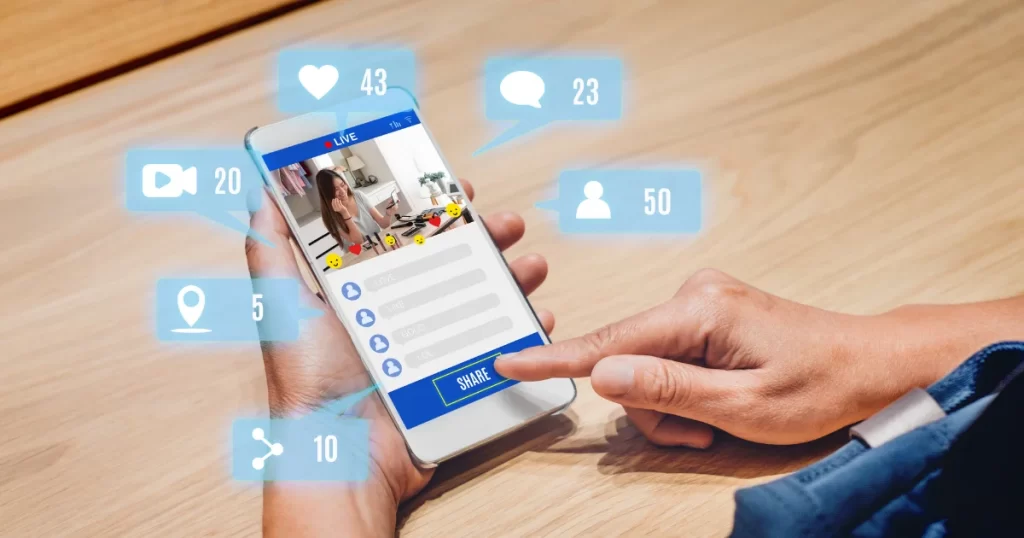
Curious why so many brands are doubling down on influencer marketing? It’s because, when done right, influencer marketing doesn’t just bring in more followers; it works like social media magic, translating attention into engagement, credibility, and conversions. Here’s a closer look at what brands gain from partnering with influencers:
Increased Brand Visibility
When it comes to visibility, influencers are a brand’s shortcut to getting noticed by niche audiences. A single shoutout from a trending influencer has a ripple effect, boosting awareness in places traditional ads simply can’t reach. Think of it this way: a prime-time TV ad might reach millions, but most of those people will either change the channel or forget the ad by morning. However, a social post from an influencer sticks around, spreads, and gets shared. Followers tune in daily, and by placing your product in that social flow, your brand can resonate with target audiences in a way that feels fresh rather than forced.
Table: Potential Reach Through Influencers of Various Sizes
| Type of Influencer | Follower Count | Audience Impact | Example Platforms |
|---|---|---|---|
| Nano-Influencers | Under 10k | Ultra-high engagement within tight-knit communities | Instagram, Facebook |
| Micro-Influencers | 10k – 50k | Engaged, niche followers | Instagram, Twitter |
| Macro-Influencers | 100k – 500k | Broad appeal with general audiences | YouTube, TikTok |
| Mega/Celebrity Influencers | 500k+ | Very high visibility, wide reach | YouTube, Instagram |
Influencers also create content that has the potential to go viral, adding fuel to the reach fire. When followers see an influencer they admire using a product, they’re far more likely to investigate the brand and share it if it resonates. With influencers who have a dedicated fan base, the ripple effect can expand across social platforms, taking brand visibility from a quiet whisper to a shout in a crowded room.
Authenticity and Trust
Authenticity has become a rare commodity in marketing. Consumers know when they’re being “sold to,” and that’s why influencer endorsements often perform better than brand-generated ads. When an influencer raves about a product, it feels more like a recommendation from a trusted friend than a corporate sales pitch. And it’s not just a feeling—audiences trust influencers because they choose to follow them voluntarily, connecting with them on a personal level.
Sarah Evans, a digital strategist, describes it well: “Influencer endorsements provide an authentic edge that traditional ads can’t replicate.” When influencers vouch for a product, their audience buys into that endorsement because they see it as genuine. Think about it: would you be more likely to buy a face cream from an ad on TV, or from a lifestyle blogger who’s already let you in on their skincare routine, shared tips, and used the product on camera? Exactly.
Targeted Reach
Targeting is one of the biggest wins in influencer marketing. Brands no longer have to throw money at the wall and hope it sticks; instead, they can find influencers who are already speaking to exactly the demographic they’re trying to reach. Want to target fitness enthusiasts in their 30s who are interested in sustainable products? There’s an influencer for that. Looking for eco-conscious Gen Z? There’s an influencer (or ten) for that too.
Using targeted influencers allows brands to get specific in ways that even the best digital ads can’t replicate. And while digital ads might use complex algorithms to target users, influencers naturally draw followers who share similar values, interests, and goals. By aligning with influencers whose audiences match your brand’s ideal customer profile, you’re skipping the guessing game and delivering content to people who are most likely to care.
Table: Audience Segmentation via Influencer Marketing
| Target Audience | Relevant Influencer Type | Sample Brands That Use |
|---|---|---|
| Eco-conscious millennials | Micro and nano influencers | Patagonia, Allbirds |
| Fitness enthusiasts | Macro-influencers | Nike, Under Armour |
| Pet parents | Nano-influencers | BarkBox, Chewy |
| Travel enthusiasts | Macro- and micro-influencers | AirBnB, Booking.com |
Improved Engagement Rates
It’s no secret that social media influencers see engagement rates that brands could only dream of achieving with traditional marketing. Part of this comes down to the personal relationship influencers build with their audience. Followers don’t just see them as content creators—they see them as friends, mentors, or experts whose opinions matter. A study by Tomoson found that businesses earn $6.50 for every $1 spent on influencer marketing, with the top 13% making $20 or more.
Unlike ads, which are often met with skepticism, influencer posts drive comments, likes, and shares. People actively engage with influencers by asking questions, sharing their own experiences, and, often, sharing influencer content with friends. This means brands not only get the benefit of reaching potential customers; they’re engaging them in conversations that can lead to lasting brand loyalty.
Cost-Effective Advertising
While big-name influencers come with a hefty price tag, brands can still work with smaller influencers (micro and nano) to achieve big results without a big budget. Micro- and nano-influencers, in particular, are budget-friendly yet surprisingly powerful when it comes to ROI. Their audiences are niche, highly engaged, and often come at a fraction of the cost of larger accounts.
For brands looking to test the waters of influencer marketing, smaller influencers provide a cost-effective way to learn what resonates without breaking the bank. Instead of shelling out thousands of dollars on an ad campaign, brands can work with several micro-influencers to achieve an even wider spread across diverse, niche audiences.
Table: Cost Per Post of Influencer Marketing
| Influencer Tier | Average Cost Per Post (Estimate) |
|---|---|
| Nano-Influencers | $10 – $100 |
| Micro-Influencers | $100 – $500 |
| Macro-Influencers | $500 – $5,000 |
| Celebrity Influencers | $5,000+ |
Influence Over Purchase Decisions
Influencers wield undeniable power over their followers’ buying decisions. A survey by the Digital Marketing Institute found that 49% of consumers rely on influencers when making purchase decisions. When followers see influencers using or endorsing a product, it doesn’t just spark interest; it often tips them over into purchasing. Influencers can create a sense of urgency and exclusivity, especially when they share limited-time discounts or deals.
Whether it’s a makeup tutorial that demonstrates how to use a product, a fashion post showing the latest styles, or a fitness influencer walking through a workout routine, followers don’t just watch; they act. This ability to convert is why influencer marketing continues to outperform many traditional marketing strategies.
To conclude this section, influencer marketing has redefined how brands reach, engage, and convert audiences. By leveraging influencers, brands achieve what traditional ads often cannot—authenticity, trust, and a targeted reach that connects with consumers in an organic way.
Risks to Consider in Influencer Marketing Campaigns
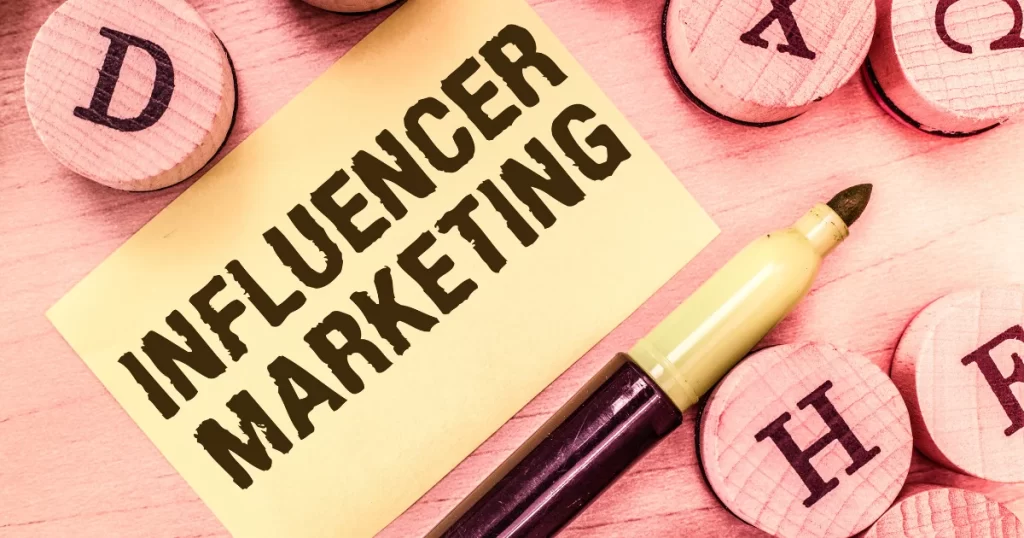
It’s easy to get swept up in the allure of influencer marketing: big audiences, relatable personas, and the promise of “instant” social proof. But behind the curtain, this approach can come with more baggage than a celebrity entourage. Here are some of the key risks lurking in influencer marketing campaigns—and why they’re worth careful consideration.
Fake Followers and Bots: When Numbers Lie
If you think every follower on an influencer’s profile represents an engaged potential customer, think again. The influencer market has become a ripe playground for “fake followers”—bot accounts created to inflate follower counts and make an influencer appear more popular. With influencer rates often tied to their number of followers, it’s an all-too-common trap for brands who end up paying for reach that, quite literally, doesn’t exist.
Why It Matters: Bots don’t buy products, they don’t engage authentically, and they certainly don’t convert into sales. This illusion can lead brands to sink money into campaigns that fail to reach real people, much less the right audience. To avoid wasting your budget on empty numbers, work with influencers who have proven, measurable engagement metrics beyond just follower counts. Partner with professionals who can verify their audience demographics and back it up with solid data, and use tools that help detect fake followers. Remember, a thousand real, engaged followers are worth infinitely more than a million bots.
| Risk | Description |
|---|---|
| Fake Followers | Bots and fake profiles that create an illusion of popularity but offer no real engagement. |
| Real Followers’ Engagement | Checking if actual followers engage meaningfully through comments, shares, and likes, rather than solely relying on follower counts. |
Brand Reputation Vulnerability: When the Image Gets Tarnished
Influencers are people, which means they can make mistakes—some more public than others. A single tweet, story, or “off-the-cuff” post from an influencer can plunge a brand into a PR crisis faster than you can say “hashtag scandal.” When you align your brand with a specific personality, you’re borrowing not only their audience but also their reputation. This may be great when things go smoothly, but it can quickly become a brand manager’s nightmare when an influencer’s personal choices or public behavior go off the rails.
Why It Matters: The internet has a long memory, and today’s “canceled” influencer can lead to tomorrow’s brand backlash. When an influencer’s reputation takes a hit, the brands they represent often get dragged down with them. By investing in thorough research and reviewing the influencer’s social media presence over time, brands can mitigate this risk. Brands should have a crisis management plan in place and work with influencers who align closely with their core values.
Legal Considerations: The Fine Print You Can’t Ignore
Believe it or not, influencer marketing has become official enough that it’s now on the radar of the Federal Trade Commission (FTC). The FTC requires influencers to disclose sponsored content with proper tags, like #ad or #sponsored, to make it clear to audiences when they’re being marketed to. But even in 2023, some influencers (especially micro-influencers) “forget” or deliberately ignore these guidelines, placing brands at risk of penalties for non-compliance.
Why It Matters: Brands are responsible for ensuring compliance with FTC guidelines, meaning that if an influencer skips the disclosure, both the influencer and the brand could face fines and other penalties. In fact, the FTC has become increasingly proactive in monitoring online content, and non-compliant influencer marketing campaigns can also lead to damaged credibility and potential legal consequences.
| Risk | Description |
|---|---|
| Legal Compliance | Ensuring influencers disclose partnerships to avoid FTC violations and maintain trustworthiness. |
| Brand Credibility | Failure to disclose can harm a brand’s reputation, as consumers may view undisclosed ads as deceptive. |
By acknowledging and preparing for these potential risks, brands can approach influencer marketing with a strategy that maximizes the benefits while minimizing the pitfalls. Done right, influencer marketing remains one of the most powerful ways to reach today’s savvy consumers, but it requires careful management and a discerning eye.
7 Best Practices for Effective Influencer Marketing Campaigns in 2024

So, you’re ready to jump headfirst into influencer marketing—glad you’ve made it this far! Let’s make sure you’re set up to avoid common pitfalls and get the most out of your campaign. Here’s a no-nonsense guide to seven essential practices that will set your brand up for success.
1. Choose the Right Influencers
Not all influencers are created equal, and follower counts don’t tell the full story. Think of this as casting for a movie: if your brand’s story is a light-hearted rom-com, you wouldn’t want to cast a horror actor in the lead role. Sure, they might have a huge fan base, but do they truly resonate with your audience? Look for influencers whose values align with yours and whose audience mirrors your target demographic. This is your shot to find a voice that can authentically represent your brand’s vibe.
How to Find Them: Start by analyzing the influencer’s content and engagement rate (comments, shares, and genuine conversations). A strong, active fan base often signals a solid influence. Work with platforms or agencies that can vet influencers’ follower authenticity and give you a breakdown of demographics.
| Influencer Selection Criteria | Description |
|---|---|
| Engagement Rate | Look for high engagement rates that suggest an active, engaged audience. |
| Audience Match | Ensure the influencer’s followers align with your target demographic. |
| Brand Value Alignment | The influencer’s content should naturally fit with your brand values. |
2. Set Clear Expectations and Deliverables
Nothing derails a campaign faster than vague instructions. Imagine hiring an influencer to represent your high-end skincare line and watching them post a wild, messy routine involving random kitchen ingredients. Instead of crossing your fingers and hoping for the best, provide them with a clear set of guidelines and objectives upfront. What are they promoting? How often should they post? What kind of tone should they strike? Get specific and create a roadmap for them to follow.
Essential Deliverables to Define:
- Content frequency and platform(s)
- Required hashtags and disclosures
- Posting timeline and due dates for approval (if necessary)
Having clarity doesn’t stifle creativity; it directs it. And if things don’t go to plan? You’ll at least have a concrete framework to refer back to.
3. Use Transparent Contracts
A handshake and a shared hashtag aren’t enough. Treat your influencer contracts like any other business agreement. A solid contract protects you from misunderstandings, miscommunication, and the occasional influencer who might “forget” to post on time. Include details on deliverables, timelines, payment terms, and even what happens if something goes wrong. Are they required to redo a post if they miss the mark? Do they need to remove posts after a certain period? Outline it all.
Key Contract Elements to Cover:
- Posting deadlines and deliverables
- Payment structure and timelines
- Legal compliance and disclosure requirements
- Content ownership and exclusivity terms (if applicable)
This isn’t just about staying organized; it’s about setting the partnership up for success. Think of the contract as the guardrails that keep the collaboration on track.
| Contract Elements | Purpose |
|---|---|
| Payment Terms | Clarifies timing and structure for compensation. |
| Posting Requirements | Defines post frequency, timing, and type. |
| Compliance Obligations | Ensures adherence to FTC guidelines. |
4. Monitor KPIs to Track Performance
After your campaign kicks off, it’s easy to get caught up in vanity metrics. But real success isn’t about how big the numbers are; it’s about how well they work for you. Set your key performance indicators (KPIs) ahead of time and monitor them closely. Engagement rate, conversion rate, and audience reach are often the golden trifecta, but don’t overlook other metrics specific to your goals.
KPIs to Track:
- Engagement Rate: Are people interacting, or are they just scrolling past?
- Conversion Rate: If you’re aiming for sales, how many followers actually became customers?
- Audience Reach vs. Impressions: How many unique users did you reach, and how often were they exposed to your content?
One major watch-out? Don’t let follower count sway your judgment. At the end of the day, it’s far better to reach 10,000 genuinely interested users than a million indifferent ones.
| Key KPIs | Why It Matters |
|---|---|
| Engagement Rate | Measures genuine interest and connection with the audience. |
| Conversion Rate | Tracks actual outcomes, like clicks or purchases. |
| Reach vs. Impressions | Differentiates between unique viewers and repeated exposure. |
5. Engage with Influencers’ Content
Influencer marketing is meant to be collaborative, not a one-sided billboard. Once the influencer posts, your job isn’t done. Show up in the comments, like the posts, and share them on your own channels. This boosts authenticity and signals that the partnership is real, not just a transaction.
Why It Works: Your engagement gives the impression of an authentic relationship and adds a layer of trust. It’s one thing for an influencer to endorse your brand; it’s another for your brand to visibly endorse the influencer back. When you engage, you’re building credibility, reinforcing the brand-influencer partnership, and increasing the likelihood that their followers will check you out.
6. Be Ready for the Unexpected
Influencer marketing is no walk in the park. From surprise scandals to last-minute changes in platform algorithms, campaigns can take unpredictable turns. For instance, an influencer might unexpectedly go viral for reasons unrelated to your campaign, or they might post something that doesn’t sit well with their audience. Be prepared to adapt.
Crisis Management Tips:
- Stay in Close Contact: Maintain an open line of communication with your influencers.
- Have a Backup Plan: This can be anything from pre-planned social media posts to a crisis communications plan.
- Manage Public Responses Quickly: Whether it’s addressing a minor hiccup or a major backlash, stay responsive and transparent with your audience.
Having a solid crisis plan can help you address these potential setbacks swiftly and smartly, minimizing impact on your campaign.
7. Leverage Multiple Platforms
Don’t put all your influencer marketing eggs in one basket. Influencers today aren’t limited to one social media platform, and neither should your strategy be. While Instagram and TikTok are often top-of-mind, YouTube, Twitter, and even LinkedIn can offer opportunities to reach a more diverse and segmented audience.
Platform Tips for Success:
- TikTok: Great for short, snappy content and younger audiences.
- Instagram: Ideal for photo and short-form video content, with features like Stories and Reels.
- YouTube: Perfect for in-depth content and product tutorials.
- LinkedIn: Best for B2B influencer marketing with a focus on professional audiences.
Using multiple platforms doesn’t just expand your reach; it also lets you see which formats work best for your audience. An integrated approach can yield more consistent engagement and provide a safety net if one platform’s algorithm shifts.
| Platform | Best For |
|---|---|
| TikTok | Quick, engaging videos for younger audiences. |
| Visual content, product teasers, and reels. | |
| YouTube | Long-form tutorials, in-depth brand storytelling. |
| B2B audiences and professional endorsements. |
Successful Brands Leveraging Influencer Marketing Strategies: Case Studies
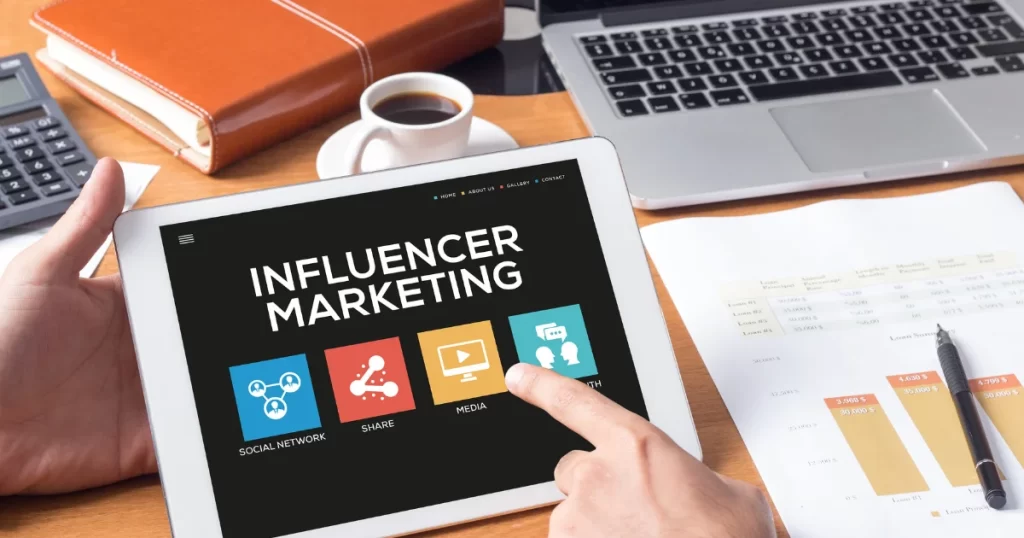
Real-world examples bring ideas to life, and when it comes to influencer marketing, a few standout brands have written the playbook. Here’s a closer look at how some of today’s top brands turned social influence into serious business:
| Brand | Strategy | Impact |
|---|---|---|
| Glossier | Partnered with micro-influencers | Increased brand awareness and loyal following |
| Daniel Wellington | Pioneered the Instagram “wrist shot” | Cultivated a lifestyle-focused, aspirational brand |
| Gymshark | Used fitness influencers as ambassadors | Built a global fitness community and brand loyalty |
Glossier:
This beauty giant started from a beauty blog and turned into an empire through its targeted use of influencer partnerships and user-generated content. Instead of collaborating only with big-name influencers, Glossier leaned into micro-influencers and even its own customers, encouraging them to share their looks on Instagram. These partnerships helped the brand appear more authentic and relatable, and the constant stream of user-generated content became its most powerful marketing tool. The impact? A beauty brand that feels as personal as it is popular.
Daniel Wellington:
Sometimes, one visual is all it takes. Daniel Wellington’s now-famous “wrist shot” campaign encouraged influencers to take photos featuring their stylish watches, creating a consistent and highly shareable look across Instagram. This wasn’t just about selling watches—it was about cultivating a lifestyle image. Thanks to these visually cohesive posts, Daniel Wellington became a household name in the accessory space, proving that the right creative approach can give any brand an instant boost in engagement and brand recognition.
Gymshark:
What began as a small fitness apparel brand turned into a global phenomenon thanks to influencer marketing. Gymshark partnered with fitness personalities, or “Gymshark Athletes,” who were already dedicated to building their own fitness communities. These partnerships extended beyond simple promotions; Gymshark’s influencers became true brand ambassadors, embodying the active, motivated lifestyle the brand stands for. The result? Gymshark didn’t just grow sales—it built a fiercely loyal community that feels a genuine connection to the brand.
These brands succeeded because they didn’t just pick influencers at random—they chose individuals who embodied their brand ethos. By aligning influencers with their target audiences and values, these companies turned followers into lifelong fans.
The Future of Influencer Marketing: Trends to Watch Out For in 2024 and Beyond
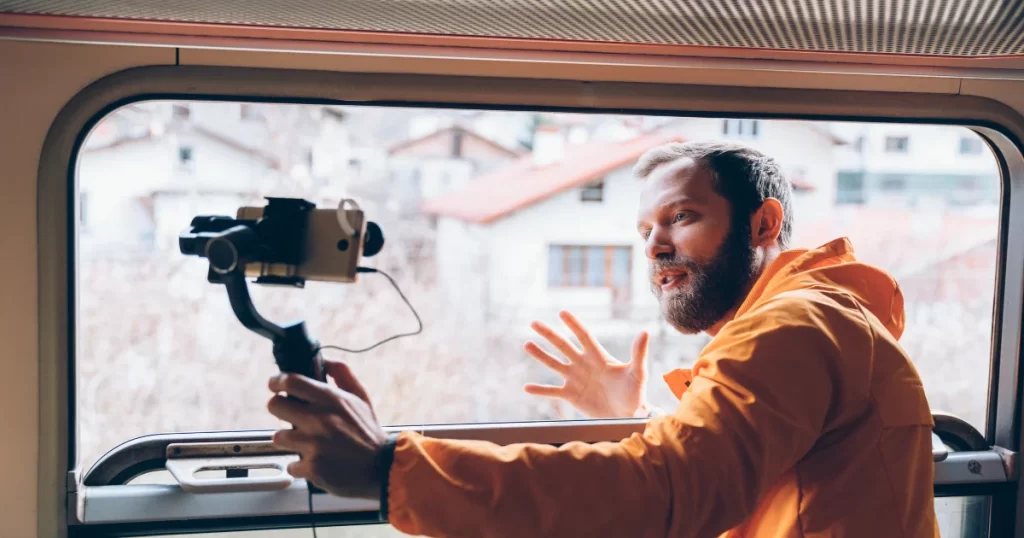
Brace yourselves for the next evolution of influencer marketing. This world moves fast, and 2024 is set to bring new trends that could shake up the entire game. Here’s what savvy marketers need to watch:
- Rise of Virtual Influencers: Digital influencers, like Lil Miquela and FN Meka, are the new frontiers in influencer marketing. These aren’t real people; they’re CGI characters created by artists and developers who curate their personalities, looks, and even backstories. They may sound like a strange concept, but they’re proving surprisingly effective. Why? Virtual influencers allow brands complete control over their image, ensuring a consistent voice and visual representation—without any of the “human” unpredictability. However, they don’t come without risks, especially as consumers push back against inauthenticity. Brands will need to tread carefully, balancing innovation with the authentic appeal audiences crave.
- More Influencers Becoming Brand Owners: Influencers aren’t just content creators anymore—they’re evolving into entrepreneurs. Take MrBeast’s restaurant chain, or even smaller influencers launching their own clothing lines, skincare brands, or apps. As more influencers cross the line into brand ownership, the stakes shift. Consumers trust influencers because of their unique voices and personal stories, so when an influencer starts a brand, their followers are more likely to give it a shot. This trend is set to explode, but the bar will be high. Influencers-turned-brand-owners need to ensure quality and authenticity if they want their brand to grow beyond a passing novelty.
- Interactive Content and Real-Time Engagement: Gone are the days of static posts and videos. The new wave of influencer marketing is all about interactive content—think live streams, Q&As, and even augmented reality experiences that let followers “try on” products virtually. This type of content fosters real-time engagement, allowing brands to connect with followers on a deeper level. Instead of watching a makeup tutorial, followers might soon be able to join an influencer in a virtual dressing room. Expect platforms like TikTok and Instagram to keep pushing these interactive boundaries.
- AI-Driven Content Personalization: Data is the backbone of any solid marketing strategy, and influencer marketing is no exception. AI is increasingly used to tailor content to specific audiences, ensuring that posts are more relevant than ever. AI-driven content can analyze user preferences, behavior, and even mood, giving influencers insights to create hyper-personalized content. Imagine scrolling through Instagram and seeing an influencer promoting a product you were just researching. It’s both exciting and a little creepy, but as AI becomes more integrated, personalized recommendations will become a central part of influencer campaigns.
- Platform Diversification: While Instagram and TikTok dominate, audiences are scattering across platforms like Discord, Twitch, and even niche forums. Platform diversification will be key for brands that want to meet audiences where they are rather than expecting them to flock to mainstream channels. The result? Campaigns that spread across multiple platforms in new, creative ways, targeting people who may be outside the traditional social media audience. As attention spans shift, having a presence on various platforms will ensure a broader reach and deeper connections with audiences.
- Influencers as Co-Creators, Not Just Promoters: Influencers are starting to work with brands as co-creators instead of just promoters. Instead of waiting for brands to dictate terms, influencers are bringing ideas to the table, helping craft campaigns from scratch. They’re shaping products, ideating ad concepts, and even helping brands reach niche communities. This trend reflects a shift in how brands perceive influencers—not just as tools to gain reach but as valuable creative partners who can steer a brand’s direction.
- Sustainable and Ethical Partnerships: Today’s consumers expect brands to be socially responsible, and influencers are starting to mirror those values. Partnerships that focus on sustainability and ethics will continue to grow, with influencers choosing to work with brands that reflect their personal beliefs. For instance, more influencers are emphasizing eco-friendly product collaborations, calling out fast fashion, and pushing for transparency in partnerships. Brands that embrace these values will resonate more strongly with audiences who care about environmental and social impact.
These trends represent a dynamic shift in the influencer marketing landscape, emphasizing authenticity, personalization, and ethical engagement. The more brands stay tuned to these developments, the better they’ll be positioned to make an impact with influencer marketing in 2024 and beyond.
Conclusion
Influencer marketing isn’t just a trend; it’s a fundamental shift in how brands connect with audiences. As we’ve seen, brands like Glossier, Daniel Wellington, and Gymshark have pioneered the art of influencer marketing, leveraging authentic voices to build loyalty and trust. These brands demonstrate that influencer marketing doesn’t simply promote products; it builds communities, cultivates cultures, and creates advocates. The core of influencer marketing is connection, and whether it’s through micro-influencers, virtual influencers, or influencers-turned-entrepreneurs, the power of this strategy is undeniable.
Looking forward, influencer marketing will continue evolving in surprising ways. Trends like virtual influencers, brand-owned influencer ventures, interactive content, and even co-created campaigns all point to the ongoing innovation within influencer marketing. AI-driven personalization and platform diversification are set to make influencer marketing more targeted and effective than ever, reaching audiences on an individual level across various channels. It’s clear that influencer marketing in 2024 and beyond will rely heavily on authenticity, creativity, and responsiveness to consumer demands for ethical and sustainable choices.
Yet, it’s also true that influencer marketing requires brands to stay adaptive. As trends shift and new tools emerge, brands must remain flexible to leverage influencer marketing in ways that resonate with changing audiences. There’s no one-size-fits-all solution in influencer marketing; the strategies that work are those that feel genuine, showcase brand values, and ultimately, put the audience first. As the landscape of influencer marketing grows, so too will the opportunities for brands to create powerful, lasting impressions.
The world of influencer marketing has never been more vibrant, experimental, and impactful. Brands that can harness influencer marketing’s full potential and adapt to its rapid shifts will find themselves at the forefront of the industry. So, as we move into this new era, one thing is certain: influencer marketing is not just here to stay; it’s here to lead.

